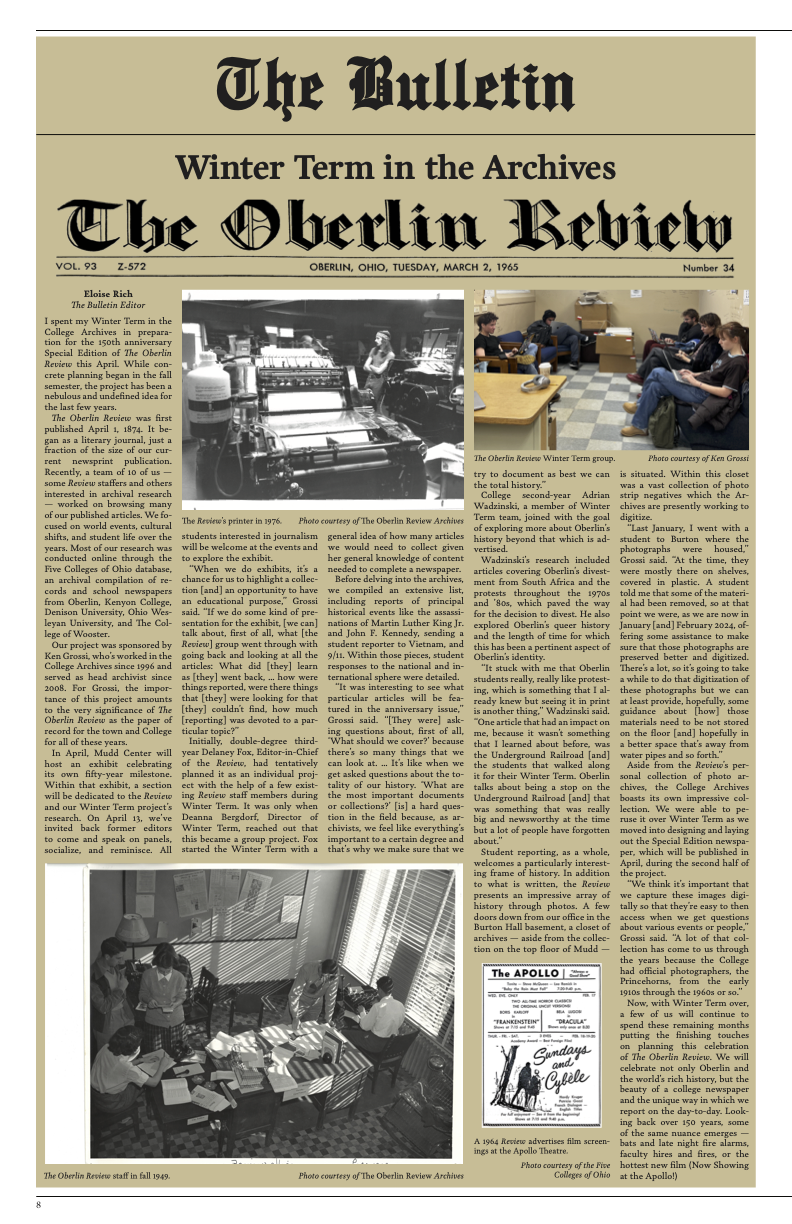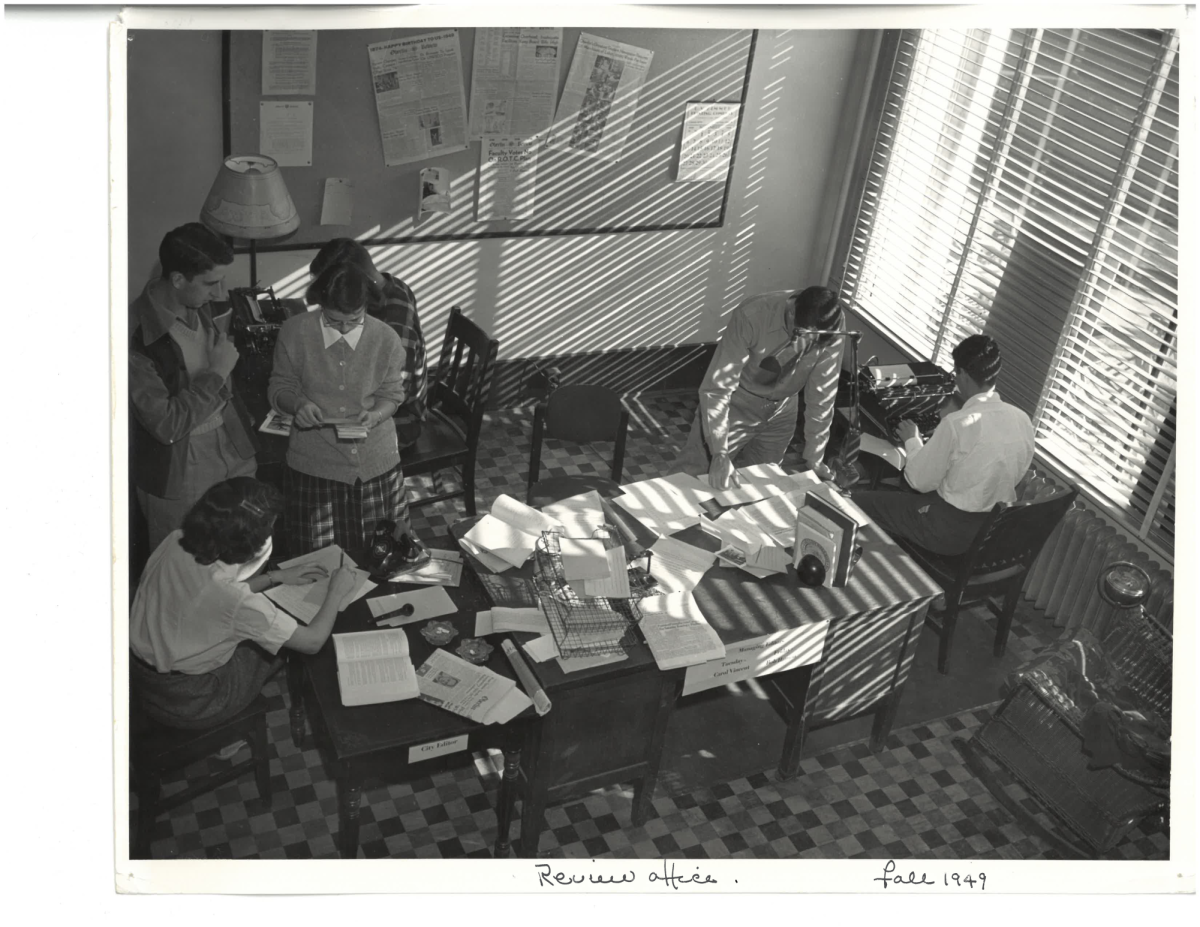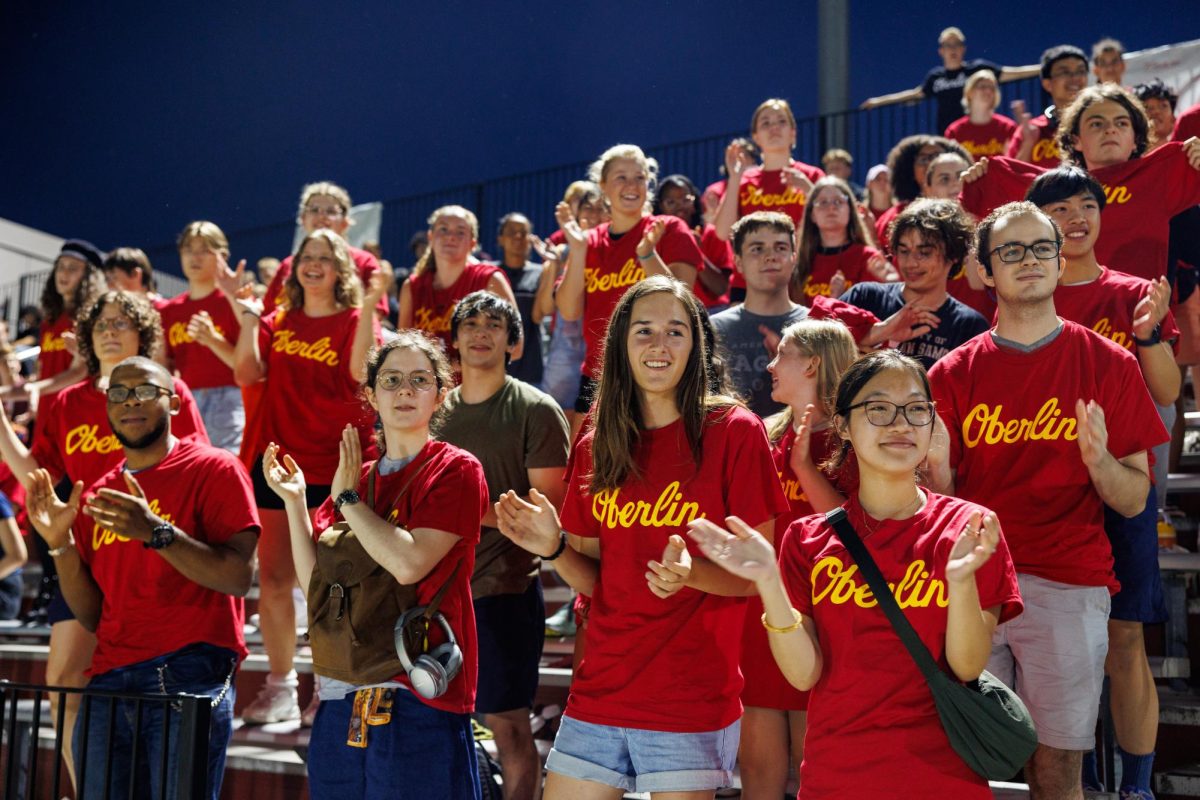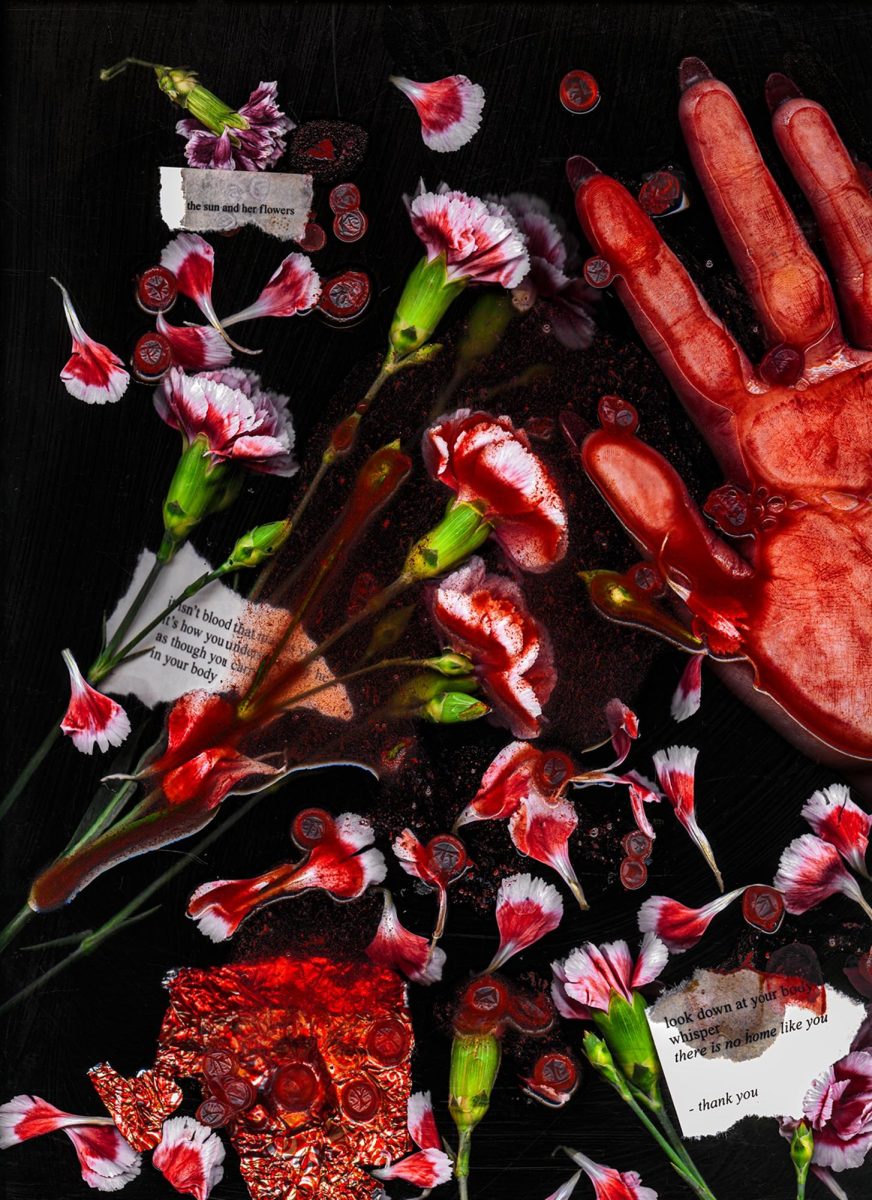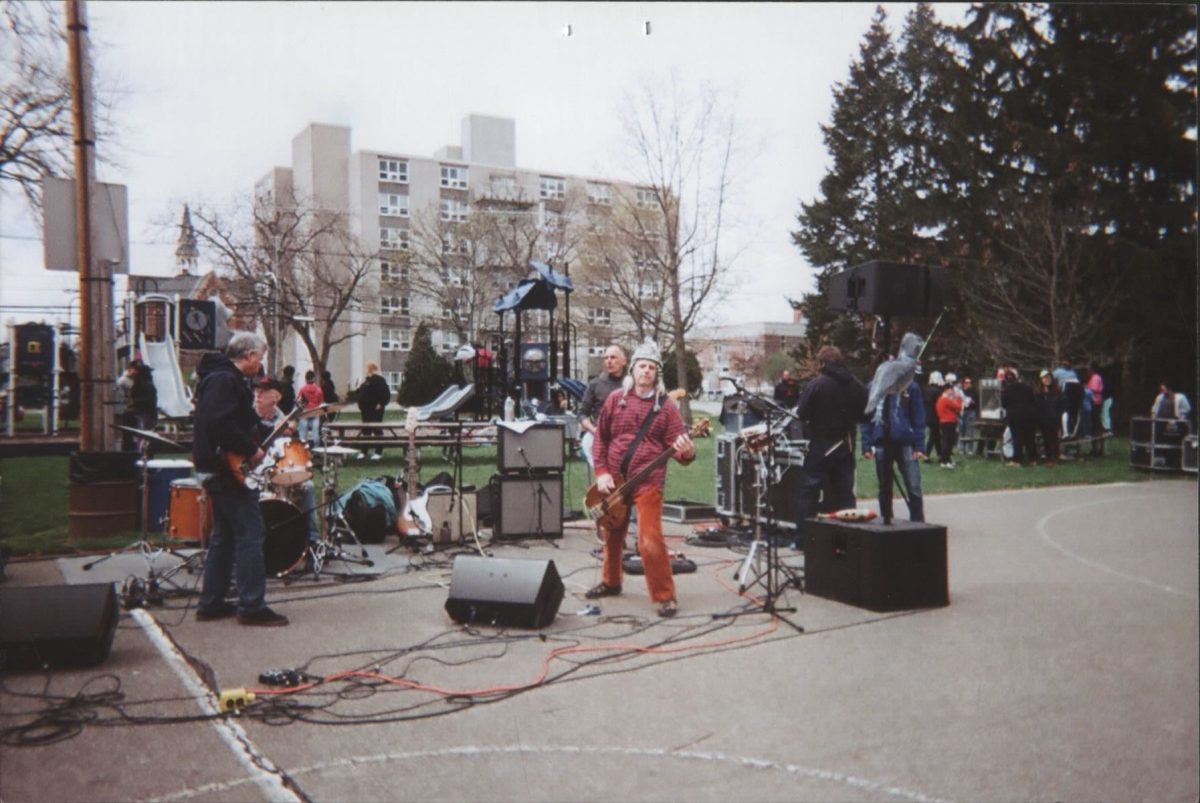I spent my Winter Term in the College Archives in preparation for the 150th anniversary Special Edition of The Oberlin Review this April. While concrete planning began in the fall semester, the project has been a nebulous and undefined idea for the last few years.
The Oberlin Review was first published April 1, 1874. It began as a literary journal, just a fraction of the size of our current newsprint publication. Recently, a team of 10 of us — some Review staffers and others interested in archival research — worked on browsing many of our published articles. We focused on world events, cultural shifts, and student life over the years. Most of our research was conducted online through the Five Colleges of Ohio database, an archival compilation of records and school newspapers from Oberlin, Kenyon College, Denison University, Ohio Wesleyan University, and The College of Wooster.
Our project was sponsored by Ken Grossi, who’s worked in the College Archives since 1996 and served as head archivist since 2008. For Grossi, the importance of this project amounts to the very significance of The Oberlin Review as the paper of record for the town and College for all of these years.
In April, Mudd Center will host an exhibit celebrating its own fifty-year milestone. Within that exhibit, a section will be dedicated to the Review and our Winter Term project’s research. On April 13, we’ve invited back former editors to come and speak on panels, socialize, and reminisce. All students interested in journalism will be welcome at the events and to explore the exhibit.
“When we do exhibits, it’s a chance for us to highlight a collection [and] an opportunity to have an educational purpose,” Grossi said. “If we do some kind of presentation for the exhibit, [we can] talk about, first of all, what [the Review] group went through with going back and looking at all the articles: What did [they] learn as [they] went back, … how were things reported, were there things that [they] were looking for that [they] couldn’t find, how much [reporting] was devoted to a particular topic?”
Initially, double-degree third-year Delaney Fox, Editor-in-Chief of the Review, had tentatively planned it as an individual project with the help of a few existing Review staff members during Winter Term. It was only when Deanna Bergdorf, Director of Winter Term, reached out that this became a group project. Fox started the Winter Term with a general idea of how many articles we would need to collect given her general knowledge of content needed to complete a newspaper.
Before delving into the archives, we compiled an extensive list, including reports of principal historical events like the assassinations of Martin Luther King Jr. and John F. Kennedy, sending a student reporter to Vietnam, and 9/11. Within those pieces, student responses to the national and international sphere were detailed.
“It was interesting to see what particular articles will be featured in the anniversary issue,” Grossi said. “[They were] asking questions about, first of all, ‘What should we cover?’ because there’s so many things that we can look at. … It’s like when we get asked questions about the totality of our history. ‘What are the most important documents or collections?’ [is] a hard question in the field because, as archivists, we feel like everything’s important to a certain degree and that’s why we make sure that we try to document as best we can the total history.”
College second-year Adrian Wadzinski, a member of Winter Term team, joined with the goal of exploring more about Oberlin’s history beyond that which is advertised.
Wadzinski’s research included articles covering Oberlin’s divestment from South Africa and the protests throughout the 1970s and ’80s, which paved the way for the decision to divest. He also explored Oberlin’s queer history and the length of time for which this has been a pertinent aspect of Oberlin’s identity.
“It stuck with me that Oberlin students really, really like protesting, which is something that I already knew but seeing it in print is another thing,” Wadzinski said. “One article that had an impact on me, because it wasn’t something that I learned about before, was the Underground Railroad [and] the students that walked along it for their Winter Term. Oberlin talks about being a stop on the Underground Railroad [and] that was something that was really big and newsworthy at the time but a lot of people have forgotten about.”
Student reporting, as a whole, welcomes a particularly interesting frame of history. In addition to what is written, the Review presents an impressive array of history through photos. A few doors down from our office in the Burton Hall basement, a closet of archives — aside from the collection on the top floor of Mudd — is situated. Within this closet was a vast collection of photo strip negatives which the Archives are presently working to digitize.
“Last January, I went with a student to Burton where the photographs were housed,” Grossi said. “At the time, they were mostly there on shelves, covered in plastic. A student told me that some of the material had been removed, so at that point we were, as we are now in January [and] February 2024, offering some assistance to make sure that those photographs are preserved better and digitized. There’s a lot, so it’s going to take a while to do that digitization of these photographs but we can at least provide, hopefully, some guidance about [how] those materials need to be not stored on the floor [and] hopefully in a better space that’s away from water pipes and so forth.”
Aside from the Review’s personal collection of photo archives, the College Archives boasts its own impressive collection. We were able to peruse it over Winter Term as we moved into designing and laying out the Special Edition newspaper, which will be published in April, during the second half of the project.
“We think it’s important that we capture these images digitally so that they’re easy to then access when we get questions about various events or people,” Grossi said. “A lot of that collection has come to us through the years because the College had official photographers, the Princehorns, from the early 1910s through the 1960s or so.”
Now, with Winter Term over, a few of us will continue to spend these remaining months putting the finishing touches on planning this celebration of The Oberlin Review. We will celebrate not only Oberlin and the world’s rich history, but the beauty of a college newspaper and the unique way in which we report on the day-to-day. Looking back over 150 years, some of the same nuance emerges — bats and late night fire alarms, faculty hires and fires, or the hottest new film (Now Showing at the Apollo!)
